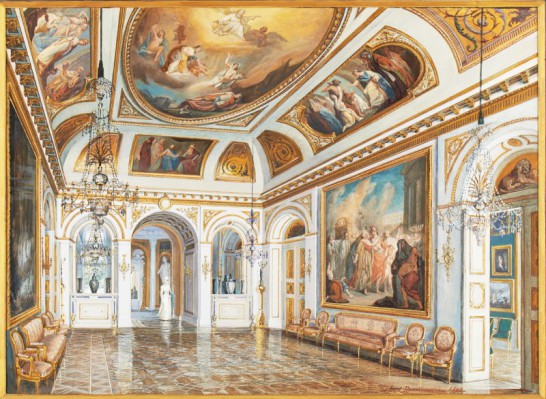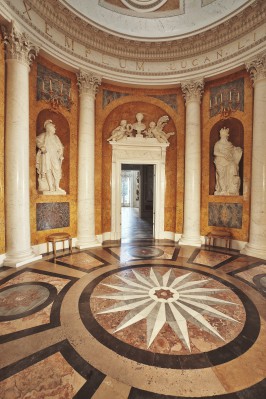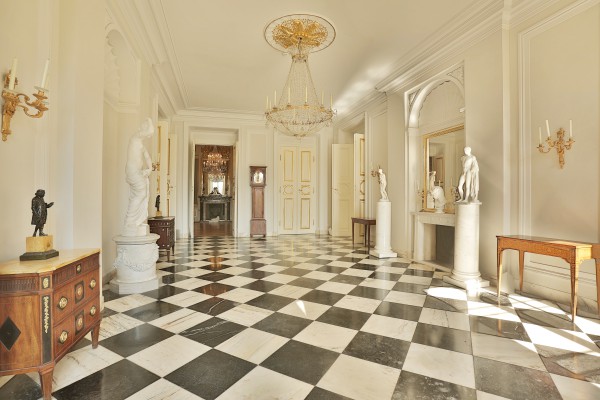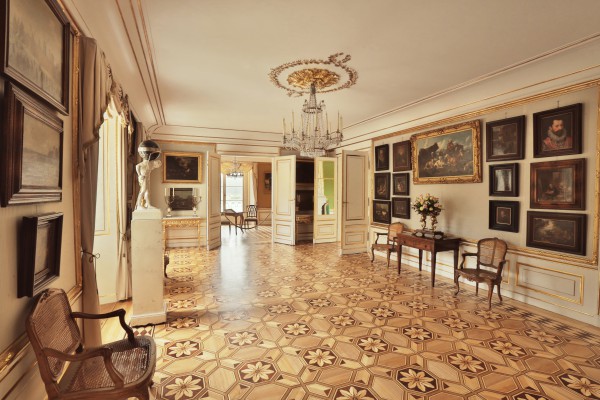
The Small Gallery
The room appeared as a result of adding a new storey to the Bathhouse in 1777. Its walls are white, with gilded partitions, modelled on the interiors of Louis XVI. Most of the paintings hanging here are the creations of Dutch painters from the 17th and 18th century. They include many paintings of the most important artists. Genre scenes by Gerard Terborch (Social Scene), David Teniers the Younger (Scene at an Inn), and Gabriel Metsu (The Card Game) can spark special interest. A part of the exposition is devoted to portraits. The portrait that deserves the first mention is the Portrait of an Elderly Lady – most likely by Gerard Dou; the remaining works are the Portrait of a Man by Pieter Nason, and Lady with Flowers by an unidentified Dutch painter. Here, the only painting containing religious themes is the Miracle of the Multiplication of Bread by a monogrammist identified by initials L.M.W.
In the Small Gallery, one can also admire a small, but important work of art – the statuette of Chronos (the so-called Small Chronos) carrying the globe of the sky on his back. The scythe held by the naked hero indicates with its blade the hour marked on the rim, which was set in motion by a mechanism hidden inside. This original device was the model for the statue of Chronos, as well as for the clock situated in the Knight’s Hall of the Royal Castle. Both sculptures were made by Giacomo Monaldi, second sculptor at the court of Stanisław August after André Le Brun. The artist was able to recreate the muscular male body with great precision; his interpretation of the fabric and beard of Chronos, which beautifully diffuses light, although still influenced by the Baroque, deserves attention. Both this work of art as well as the jardinière for flowers, whose urn is supported by two figures of two Atlantes made of bronze, were part of the 18th century design of the apartment.



















